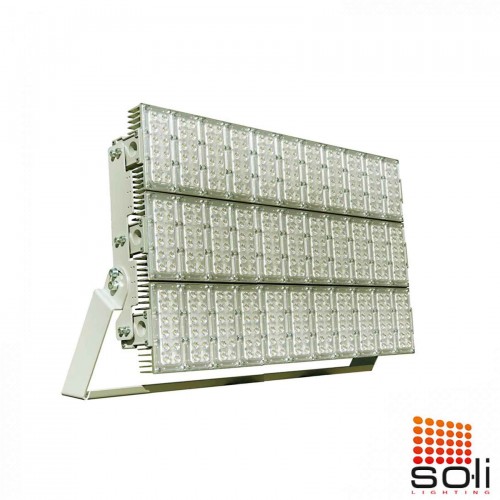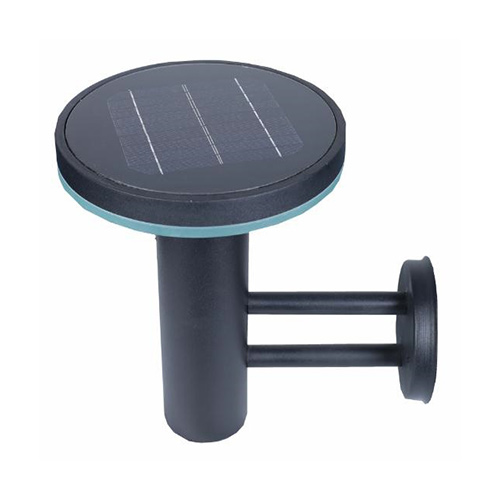Solar Street Lights and Traditional Street Lights
Solar street lights and other solar products have grown in popularity over the years. Unlike traditional light sources, solar lights do not harm the environment. This is the reason why many people are switching to this technology for their lighting needs. Also, solar lights are not dependent on electricity providers; so you get rid of heavy electricity bills.
Solar street lights are outdoor lighting devices activated via photovoltaic or PV panels. They have a rechargeable battery that can be charged with electrical power when sensing light from a source such as the sun.
Cost effectiveness
It is widely known that you will need a costly initial investment for solar products. Therefore, traditional street lamps are much cheaper. But in the long run, solar powered street lights are turning out to be a better investment than traditional ones because of all the expense you have to pay to maintain the performance of your lights.
Installation and maintenance are often costly, but solar street lights do not require regular maintenance or replacement. There is only a need to keep them clean and free from dust.
As for traditional street lights, they require the installation of utility poles, which can be very expensive. They also need to be maintained regularly, which will incur more costs.
Efficiency and Brightness
In terms of visibility, solar powered lights closely simulate sunlight as they have built-in LEDs. These LED lights give you the option to convert the CRI or color rendering index to your desired light color. This improves visibility at night.
On the other hand, traditional street lamps typically have metal halide lamps inside. These high intensity discharge lamps deliver most of their light from an electric arc inside a compact diffusion tube. Unfortunately, these can't beat the visibility solar powered lights can give you. Solar lamps use LEDs or light-emitting diodes that surpass CFLs or compact fluorescent lamps in harnessing more energy and producing brighter light.
Lifetime
Conventional lights have an average lifespan of about 5,000 to 8,000 hours, or less than a year, while solar LED lights can live for 5 to 7 years. This idea always puts solar powered lights ahead of conventional lights.
Reliability
Solar street lights are less dependent on conventional energy and the national grid. For dusk-to-dawn lighting operations, solar products are completely reliable. Their off-grid nature equates to virtually zero maintenance and low operating costs. These lights stay on due to power outages and mains outages.
Meanwhile, traditional street lights are always affected by grid failures and power outages, as they depend on a power reserve.
Good Impact on the Environment
Solar street lights pose no threat to the environment and people. Due to the absence of electrical wires, the fire does not ignite. In addition, accidents such as drowning, overheating, electric shock will never happen. They emit a lower amount of carbon footprint than conventional lights; thus making them environmentally friendly.
In contrast, conventional lights produce lighting only from electricity, which is interrupted every time there is a mains failure. The main advantage of solar street lights is that they use renewable energy from the sun, whereas conventional lights rely on electricity produced from non-renewable fossil fuels and are limited by power outages.
Care
How do you improve the performance of a modern smart solar street light? You can manage your lights remotely using a software solution. Observe at what times the pedestrian density rises and falls. Then adjust the solar system lighting programs accordingly.
How do they work day and night? Solar cells in the PV panels of a solar street light convert the sun's heat (solar energy) into electricity (electrical energy). The solar energy is then stored in the rechargeable battery. When darkness begins to fall, the solar lights work using the energy stored in the battery. A few things that make the sun in need of maintenance are: maintenance of smart battery control systems, minor preventive maintenance, evaluation of design and performance.
Traditional street lights consume more electricity and require more maintenance and repairs at times. Operating costs are also higher.
Weatherproof Lights
Finally, one of the biggest concerns when choosing a street light is its durability. How can he stand still and still in the midst of a storm? Solar street lights are weatherproof and waterproof. If they don't get sunlight for a few days, it's okay, they can use the rest of the stored solar energy by converting it to electrical energy.
Conventional street lights, on the other hand, are not primarily designed to fully withstand extreme weather conditions. While some have the ability to withstand changing weather conditions, others are easily damaged by constant typhoons.
To summarize, solar powered LED lights are considered a step ahead of conventional lights. Today, lights with smart technology are in demand. There is no doubt that users can provide more than they need. Solar street lights can also be used for walking, cycling, going to parks, etc. encourages activities. It increases people's productivity and visibility at night.
Our ..
₺52,250
Ex Tax:₺52,250
The excite..
₺69,800
Ex Tax:₺69,800
&nbs..
₺42,250
Ex Tax:₺42,250
The excite..
₺24,350
Ex Tax:₺24,350
Our Soli L..
₺18,400
Ex Tax:₺18,400
&nbs..
₺6,450
Ex Tax:₺6,450
Our ..
₺8,700
Ex Tax:₺8,700
The excite..
₺26,600
Ex Tax:₺26,600
LED ..
₺5,250
Ex Tax:₺5,250
Road..
₺6,600
Ex Tax:₺6,600
About LED Flood Lights
- LED Flood Light Buying Guide
- Brain Of Led Flood Lights : LED Flood Light Drivers
- Can A Floodlight Be Used Instead Of Street Lights?
- Are LED Lights Suitable for Hazardous Locations?
- About High Bay and Low Bay Lighting
- 10 Benefits of LED Floodlights for Outdoor Lighting
- Main Factors of Outdoor LED Lighting Design
- Solar Floodlight
- Smart and Human Centered Lighting
- 4 Lighting Design For Post-Covid
- Health Risks That Are Actually Myth About LED Lights
- Things to Avoid When Upgrading Your Lighting Style to LED
- The Future of LED Lighting
- High Power LED Floodlight
- About Amount of Light And Light Quality
- LED Stadium Lighting Information
- Performance of LED Lights in Cold Weather
Usage Areas
- Sports Lighting
- How To Choose Stadium Lighting Company
- Aircraft Hangar Tips
- LED Warehouse Lighting
- Automotive Showroom Lighting
- Safety and Operational Tips for Light Towers
- Advantages and Applications of LED Street Lights
- How LED Street Lights Can Save Citizens Millions of Liras
- Outdoor LED Lighting
- Is LED Industry Evolving?
- LED For Car Parks
- Solar Street Lights
- Use of LEDs in Tunnel Lighting
- LED Lights for Your Garden Inside Your Home
- Solar Street Lights Calculation and Sizing




















